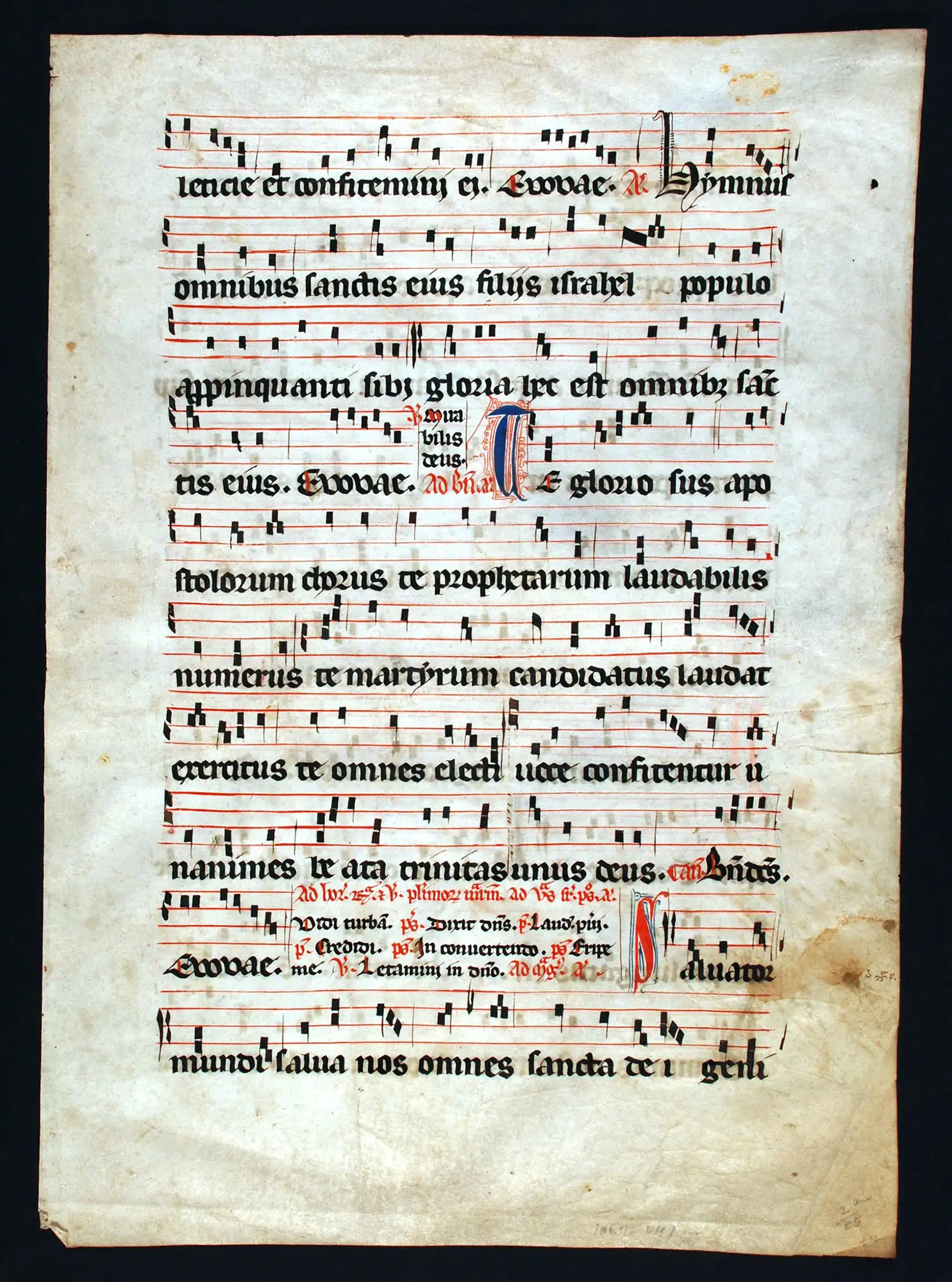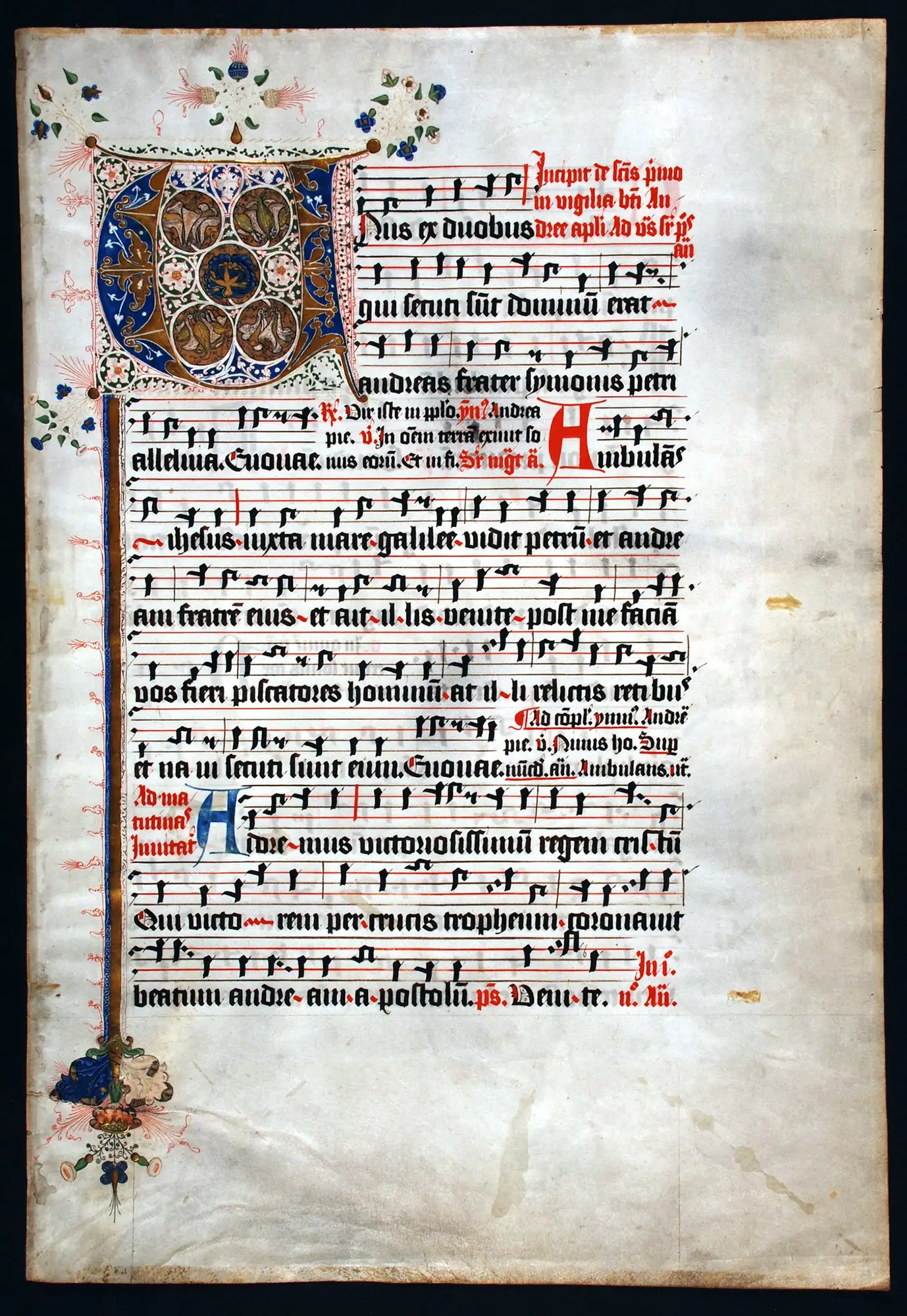Case 14

Single leaf from an Antiphonal, in Latin. Germany, fourteenth century. Reed MSF10.
The text of music manuscripts sometimes included decorated initials, as can be seen by the red “P” here. The scribe has also highlighted the word “Dominus” in the last line by a large black capital; and has whimsically decorated the ascender of a letter “h” in the third to last line with a small animal head and body.
The text is part of Vespers for the Feast of All Saints (1 November), with music on a 4-line black stave.

Single leaf from an Antiphonal in Latin. Germany, fifteenth century. Reed MSF28.
This leaf is highlighted by a large, striking initial “U” with accompanying border. The combination of fine red pen-flourishing with a palette of blue, green, yellow and off-white, together with a subtle patterning creates a lace-like effect. Gold leaf is applied with finesse in both the initial and the slender vertical border.
Choir books of large dimensions were usually divided into several volumes, and this leaf, which introduces the sung parts of the Office devoted to the feasts of the saints, probably headed the first volume of the Sanctoral in a German Antiphonal.
The text is part of Vespers and Matins for the Feast of St Andrew (30 November), with music in Hufnagelschrift neumes – an ancient type of notation - on a 5-line stave.

